Keeper of our historical memory and cultural heritage
The National Museum of Azerbaijani History celebrated its 90th birthday on 15 June 2010. Beginning life as the Educational Museum of the Native Land it later took on the name Istiglal (Independence) as the inheritance of the Istiglal Museum which had opened in 1919 for the first anniversary of the Azerbaijan Democratic Republic but which was overtaken by events. The museum’s status was raised on 25 October 1920 when, by order of the People’s Commissariat, it became the ‘State Museum of the Azerbaijan SSR’. This first state museum worked from day one as a cultural, educational and research establishment; it exhibited the tangible wealth of the history of the Azerbaijani nation and was involved in promotion as well as collection, protection, investigation and publishing. Today over 300,000 items are housed in 10 collections and a valuable library consisting mainly of unique books. The collections allow visitors and researchers to investigate the history of our country, the daily life and culture of the nation from ancient times to the present.The work of the state museum, created following the overthrow of the first democratic republic in Azerbaijan and the establishment of the soviet system, was adapted in its first decades to the rules of the totalitarian soviet regime. The process of eliminating circumstances, as well as the people behind them, which did not suit the new ideology had already started. The major changes effected by the newly established socialist society well into the second half of the 1920s, ie. for several years after the creation of the new museum, also required changes in the direction of investigation as well as to the advocacy of Azerbaijani history. The ideological dictates of the soviet regime had a negative effect on social and political life and the cultural development of the nation. These demands also turned the museum, the reflection of Azerbaijani history, into a “means of cultural revolution”, an expression of the ideology.
In 1928 the talented scientist Davud Sharifov, who had done so much for the museum over more than 5 years, was relieved of the directorship. The newly assigned Armenian director of the museum issued an order to send important and valuable artefacts (flags of the Azerbaijan Democratic Republic, Parliamentary materials, the original Declaration of Independence etc.) to the Revolution Museum which had opened in Moscow. These exhibits had been inherited from the former Istiglal museum, or collected by museum workers. This and similar actions contributed to the obliteration of the Democratic Republic from memory for long years. Thus began the disintegration of the State Museum of Azerbaijan.
Ideology first....
v In May 1934, in order to nurture the rising generation in the ideology of the totalitarian regime, a special order was adopted to improve the teaching of history and geography in schools, or, more precisely, to inculcate the ‘advantages’ of socialist society in its members. All work undertaken in schools, establishments of historical research and other institutions was to ensure a Marxist understanding of history. The increased attention given to the teaching and promotion of history was accompanied by the creation of new kinds of historical and regional museums. During this period of the ideologization of history, the State Museum of Azerbaijan became the Museum of History of Azerbaijan.Thus, the new system expanded the network of museums with a historical profile, made them stronger mechanisms of Soviet advocacy and turned them into mouthpieces. At the same time, the museum’s achievements in research stimulated an enrichment of the knowledge of the history of our native land and revealed new aspects of it. Thus phrases like “the first” and “for the first time” are often used when conversation turns to its ninety years of work. From 1925 to the 1960s, until the Institute of History of the Academy of Sciences was made responsible for archaeological work, the foundations for the scientific investigation of ancient material and cultural monuments on the territory of Azerbaijan were laid under the direction of archaeologists Davud Sharifov, Yevgeniy Pakhomov, Ishak Jafar-Zadeh, Movsum Salamov, Saleh Gaziyev, Mammadali Huseynov. Excavations were conducted in Khojaly, Qabala, Ganja, Kharaba Gilan, Orangala, Mingechevir and other places The materials obtained during these excavations and from ethnographic expeditions organised by the Museum are now part of the museum’s collection; they enrich its displays and have also provided source material for a great many books and theses.
In praise of....
As a result of a change in direction of the Museum’s work in 1936, the Nature, Atheism and Religion, Literature and Arts departments, together with their collections and staff, departed and became independent institutions (the Theatre department, which had been part of the museum, had already become the independent Theatre Museum in 1934, under the direction of Agakerim Sharifov). From 1935-1940 exhibitions were organised in praise of Soviet Azerbaijan at the Museum of History of Azerbaijan (from 1938-1939 it was known as the Museum of History of the Azerbaijani Nations) which became a tool for the promotion of socialism. During those years an exposition opened in the Shirvanshah’s Palace, a branch of the Museum, which was devoted to the history of Azerbaijan in the 16th and 17th centuries; it advocated class war, mainly illustrating the struggle of hard-working peasants against their feudal lords.The focus from 1940-1953 was firmly on the Shirvanshah’s Palace, so the Museum, which had been located since 1920 in the residence of Haji Zeynalabdin Tagiyev, the famous oil magnate and philanthropist, was moved during these years to Icheri Sheher, the Shirvanshah’s Palace, by special order of the government. Tagiyev’s estate was passed to the Council of People’s Commissars (Council of Ministers) until 1953. Notwithstanding the narrowing of the range of exposition and reductions in numbers of staff at the beginning of World War II, the Museum did not close; it directed its work to strengthening archaeological investigation in the country. In those years the Museum’s archaeologists carried out archaeological investigation works in Gobustan, Ganja, Mingechevir, Qabala etc. but specific tasks like organising expositions and working on the collection were confined to the shadows. The Museum was returned to the Tagiyev estate in 1953 and finally opened its doors to visitors with a new exposition in March, 1956. This marked a new stage in the Museum’s work.
It has to be said that in those years Azerbaijani historians worked on generalised histories of the country. The academic staff of the Museum of History of Azerbaijan, which was the base unit of the republic’s Academy of Science, also prepared a new exposition to give a visual presentation of ancient history depicted by exhibits on various themes. Of course, the absence of a common historical conception created obstacles to the preparation of an exposition which reflected historical reality. Thus, the fear of deviating from the ideology of the Soviet regime prevented not only a writing of the history of the native land, but also its objective promotion through the museum. However, the republic’s archaeologists and ethnographers obtained valuable material from numerous expeditions after World War II. The study of this material and the scientific investigation of the origins of different languages from the history of Azerbaijan was particularly useful in expanding knowledge of ancient and medieval history and thus improving the expositions related to those historical periods. However, those and subsequent years required great effort to overcome the negative effects of the personality cult; it was impossible to break the ideological mould at once. At the same time, the museum carried out its main functions, according to circumstances, throughout its existence.
Research in depth
Although the museum did not directly organize archaeological expeditions from the 1960s, it became the centre for a new field: underwater archaeological investigation.In 1972 a group of divers under the direction of the museum’s historian and archaeologist Viktor Kvachidze undertook investigation work in the Caspian Sea and around the coastal zone (Bandovan I, Bandovan II, Bilgah etc.) They found underwater archaeological materials which were given prominence in the display and which were the basis of work to discover and study medieval residential locations currently under water.
The research work carried out in the Museum and the development of historical science, have contributed to the museum’s main purpose: its exposition. The findings of different expeditions, and valuable archaeological, ethnographic, numismatic and documentary materials obtained from intensive searches have been exhibited in the display and have provided evidence from the centuries-old culture and history of our nation.
At present, alongside the 10 collections there are 5 academic departments in operation in the Museum, including archaeology, ethnography and numismatics as well as a restoration laboratory.
New era
In 2008 a new exposition was developed to reflect the history of Azerbaijan from ancient times to 1920; the museum was repaired and renovated to world standards on the direct initiative of President Ilham Aliyev. In addition, 8 of the Museum’s halls function as the memorial museum of Haji Zeynalabdin Tagiyev, the building’s owner 100 years ago. The exhibits in the exposition and the memorial museum are very popular with both local and foreign visitors, introducing them to the historical development of the Azerbaijani nation, as well as confirming the establishment of a state under the name of Azerbaijan (Athropathena, Adurbadagan) 2,400 years ago.The organization and development of the Museum of History, its transformation into a major research institution and centre of museum studies in the republic, the creation of the display and numerous other exhibitions, the development of research and collections, the publication of academic works and press releases, are all the result of the selfless labour, skills and talent of several generations of historians who have worked with the Museum during these 90 years. Many informative publications have taken the museum’s collections to a wider mass of readers. The academic collection published every year since 2001, ‘Museum of Azerbaijan History,’ follows in the line of articles researched and published since the1950s.
The Museum of History has cooperated with various of the world’s museums throughout its life, participating in exhibitions, meetings and forums, and has continued this tradition during independence; it has also worked in the Russian State Museum of History, with videos (2005) and in Norway (2007) and Germany (2008), with travelling exhibitions.
New level
The National Museum of Azerbaijan History intends to organize its activities in defined conceptual directions from 2010-2015. One of its main duties is to present and confirm historical reality via the materials held in our museum. In order to protect our history and culture the museum’s collection needs to be preserved with care and love. I have to say that the cultural policy implemented in recent times in our independent country has improved the protection of our national heritage. This includes the repair and restoration of the most important museums, their refurbishment to world standards, the construction of new museum buildings, the raising to national status of the history and literature museums, orders to restore and preserve historical archaeological monuments etc. In 2008-2009, by presidential order 2 million AZN amount were allocated from the Reserve Fund and the Cabinet’s Investment Fund to purchase exhibits and restore this, the republic’s first museum. This allocation enabled the return of many invaluable art samples to the country. 4,000 new exhibits were purchased and 1,200 exhibits gained a second life after restoration and preservation.The significance of the research, advocacy and presentation of our history was stressed at an academic workshop: ‘The Role of Museums in studying of the history of Azerbaijan’ conducted on 16-17 June last year. On the first day of the workshop an exhibition was opened presenting the history and culture of the ancient cultural centre of Karabagh, an integral part of Azerbaijan but currently under Armenian occupation.
The Museum’s 90th anniversary was celebrated at state level by order of President Aliyev. The National Museum of Azerbaijani History is still today an important academic and cultural centre of historical research and material preservation.
About the author: Naila Mammadli gizi Velikhanli is Director of the National Museum of the History of Azerbaijan, Doctor of Historical Sciences and a member of the Azerbaijan National Academy of Sciences. The well-known academician is the author of fundamental research into Azerbaijan in the period of the Arab Caliphate and the medieval history of Nakhchivan. She is the executive editor of the seven-volume history of Azerbaijan.
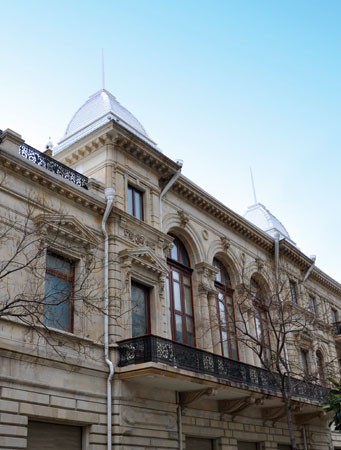
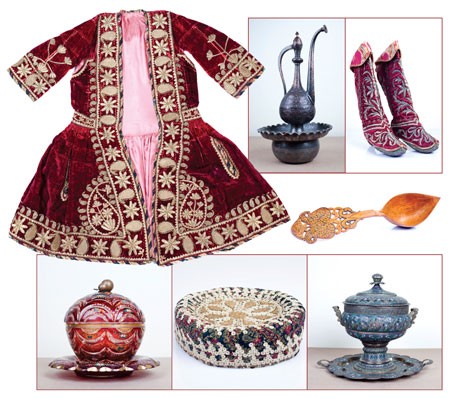
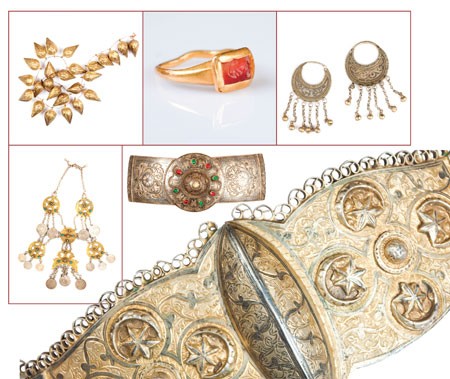
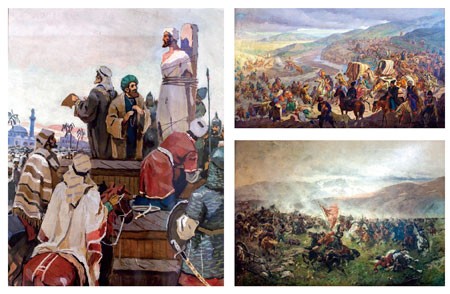
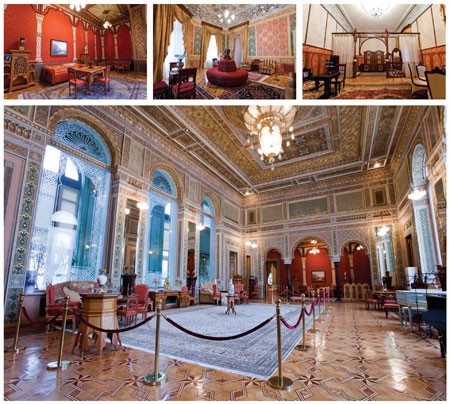


.jpg)